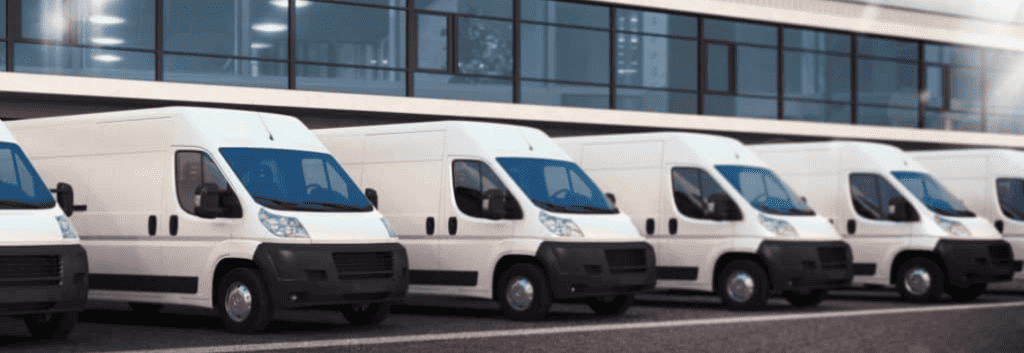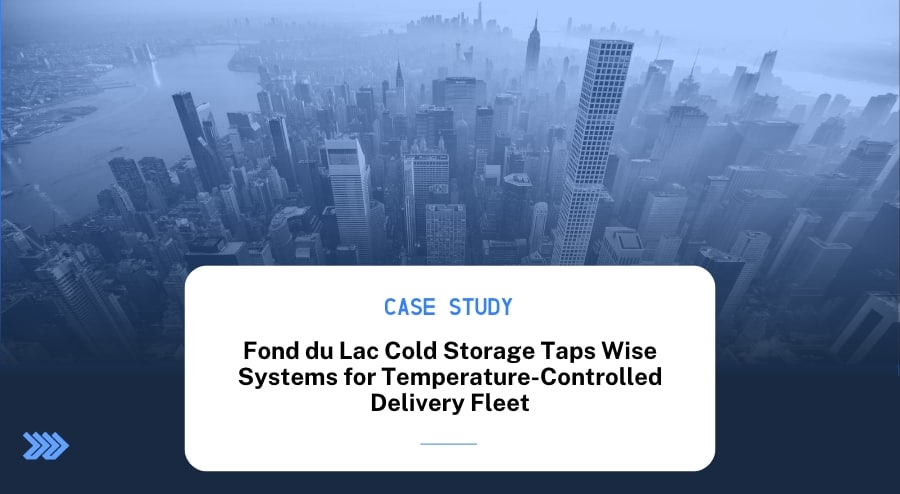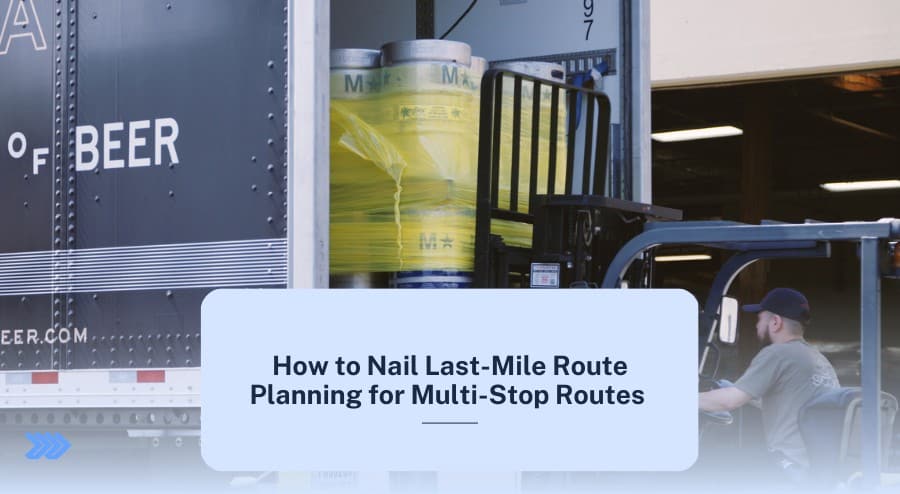
What is Last Mile Delivery? How It Works, Best Practices & More

Wise Systems
What is Last Mile Delivery? How It Works, Best Practices & More

Wise Systems

Last mile delivery plays a pivotal role in customer satisfaction, as today’s consumers expect next-day or same-day delivery with complete transparency throughout the process. In this article, we’ll discuss last mile delivery, challenges associated with the final leg of the journey, and best practices for last mile delivery optimization.
In this article:
- What is Last Mile Delivery?
- How Last Mile Delivery Works
- Last Mile Delivery Challenges
- Best Practices for Last Mile Optimization
- Frequently Asked Questions
What is Last Mile Delivery?
Last mile delivery refers to the final leg of the supply chain. It involves the movement of goods from a transportation hub (such as a distribution center or fulfillment center) to the final destination, which is typically the customer’s doorstep.
Just as logistics companies aim to provide a seamless customer experience, the entertainment industry also leverages incentives to attract and retain users, with many online platforms offering a no-deposit bonus to new players.
Last mile delivery involves the coordination of various activities, such as:
- Order processing
- Dispatching
- Routing
- Transportation
The last mile is often considered the most complex and expensive part of the delivery process due to its proximity to the customer and the high customer expectations associated with it. In fact, it comprises more than half of the total shipping costs.
In other words, last mile delivery is the bridge that connects businesses with their customers. The goal of last mile delivery is to optimize the process to minimize costs, reduce delivery times, and provide excellent customer experiences.
How Last Mile Delivery Works
Last mile delivery typically involves the following steps:
- Order Processing: Once a customer places an order, it is processed, and the relevant details are collected, including the delivery address, product information, and any special instructions.
- Dispatching: The order is then forwarded to the dispatch center, where it is assigned to an available delivery agent or vehicle based on factors such as driver proximity, vehicle capacity, and delivery timeline.
- Route Planning: Route planning involves determining the sequence of stops a delivery driver will make. Advanced last mile dispatch and routing software leverages machine learning algorithms to optimize routes, considering variables like traffic conditions, delivery time windows, and vehicle capacity to minimize transit time, reduce fuel consumption, and ensure on-time delivery.
- Tracking and Visibility: Real-time tracking technologies provide the transparency today’s customers demand, enabling them to monitor the progress of their delivery, get notifications with real-time updates, and get accurate ETAs. Additionally, managers and dispatchers can monitor driver locations and adjust routes or add stops if needed.
Last Mile Delivery Challenges
There are several challenges in last mile delivery that can hinder operational efficiency and customer satisfaction, such as:
- Cost Optimization: The cost of last mile delivery often comprises more than half of total shipping costs due to expenses such as fuel expenses, vehicle maintenance, labor costs, failed deliveries, remote delivery locations, and the need for efficient routing to minimize distance and time.
- Traffic Congestion: Urban areas often experience heavy traffic congestion, which can result in delays and longer delivery times. Navigating through crowded streets and finding suitable parking spots can also be challenging for delivery agents.
- Customer Expectations: Today’s consumers expect faster delivery, flexible time windows, and real-time tracking options. Meeting these expectations requires efficient logistics management, full visibility, and proactive communication to ensure a positive customer experience.
- Rural Delivery Areas: Delivering to rural or remote areas can be costly due to the longer distances between stops. Alternative delivery methods, such as lockers or pickup points, are becoming increasingly popular to address this last mile delivery challenge.
Best Practices for Last Mile Delivery Optimization
There are many benefits of last mile delivery when it’s fully optimized. Businesses can implement the following best practices for last mile optimization:
- Delivery Optimization Software: Delivery automation software solutions leverage artificial intelligence and machine learning algorithms to optimize various aspects of the delivery process. These systems can automatically generate optimized routes, considering factors like traffic conditions, delivery time windows, and vehicle capacity. By automating and optimizing delivery operations, businesses can reduce costs, improve delivery times, and enhance customer satisfaction.
- Real-Time Visibility and Tracking: Providing customers with real-time visibility and tracking options is essential for a positive customer experience. Customer portals or mobile apps allow customers to track the progress of their deliveries in real-time by integrating GPS data from telematics and electronic logging devices (ELDs),
- Proactive Communication: In addition to real-time tracking, companies can improve the customer experience by proactively communicating important updates, such as delays or changes in delivery time, to manage customer expectations and keep them informed.
- Data Analytics: Leveraging data analytics and performance metrics is vital for identifying bottlenecks, identifying areas of improvement, and understanding customer preferences. Data such as on-time delivery percentages, route deviations, driver workloads, and fuel usage enable managers to make informed decisions to optimize performance.
Last mile delivery is a crucial component of the supply chain. The last leg of the delivery process, it has a significant impact on customer satisfaction and requires careful planning and optimization. That’s why many businesses are turning to smart technology solutions that are reshaping last mile delivery.
The Wise Systems delivery automation platform is powered by an AI-driven Dynamic Optimization Engine (DOE) that continuously ingests operational data to make intelligent decisions and real-time recommendations.
With solutions that help improve efficiency, improve resource utilization, track and improve performance, and ultimately deliver a superior customer experience, Wise Systems offers all the tools you need to optimize final mile delivery. Request a demo to learn how Wise Systems can help you transform your last mile delivery operations.
Frequently Asked Questions
What is meant by the last mile delivery?
Last mile delivery refers to the final leg of the delivery process. The delivery process begins when a customer places an order. After receiving an order, the company begins the order processing and order fulfillment processes. These stages typically involve the following main steps:
- The company verifies the order information.
- The company confirms that the product(s) ordered are in stock.
- Warehouse associates pick the item(s) from warehouse or distribution center shelves or storage.
- Warehouse or distribution center associates package the order for shipping.
- Warehouse or distribution center workers load the packaged order into a delivery vehicle.
- This initiates the final leg of the journey, or the last mile, which encompasses the journey an order takes from the delivery vehicle to the customer’s delivery location.
This last leg, or the final mile, is often the most expensive component of the delivery process. It’s during this step that customers want full transparency, including real-time data on their order’s current location, status, and ETA.
Is last mile delivery part of logistics?
Yes, last mile delivery is part of the logistics process as it involves transporting an order. In fact, it’s often referred to as last mile logistics.
The “last mile” encompasses the process of delivering an order to its final destination, a journey that is often longer than a single mile. As with other logistics processes, last mile logistics aims to find the best, most efficient, and most cost-effective way to get orders to their final destinations.
What are other names for last mile delivery?
Last mile delivery is often referred to by several different terms, including:
- Final mile delivery
- Final mile logistics
- Last mile logistics
What is the last mile problem?
The last mile problem refers to the primary challenge of last mile delivery: the fact that it’s the most expensive and most time-consuming component of the supply chain process, often comprising more than half of total shipping costs.





